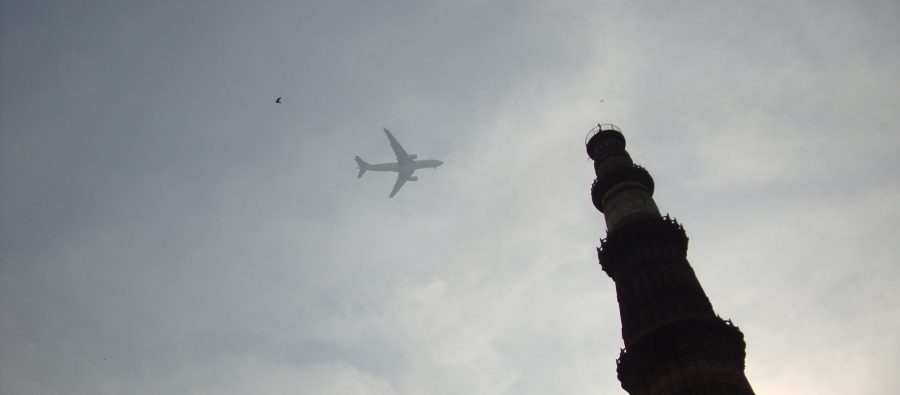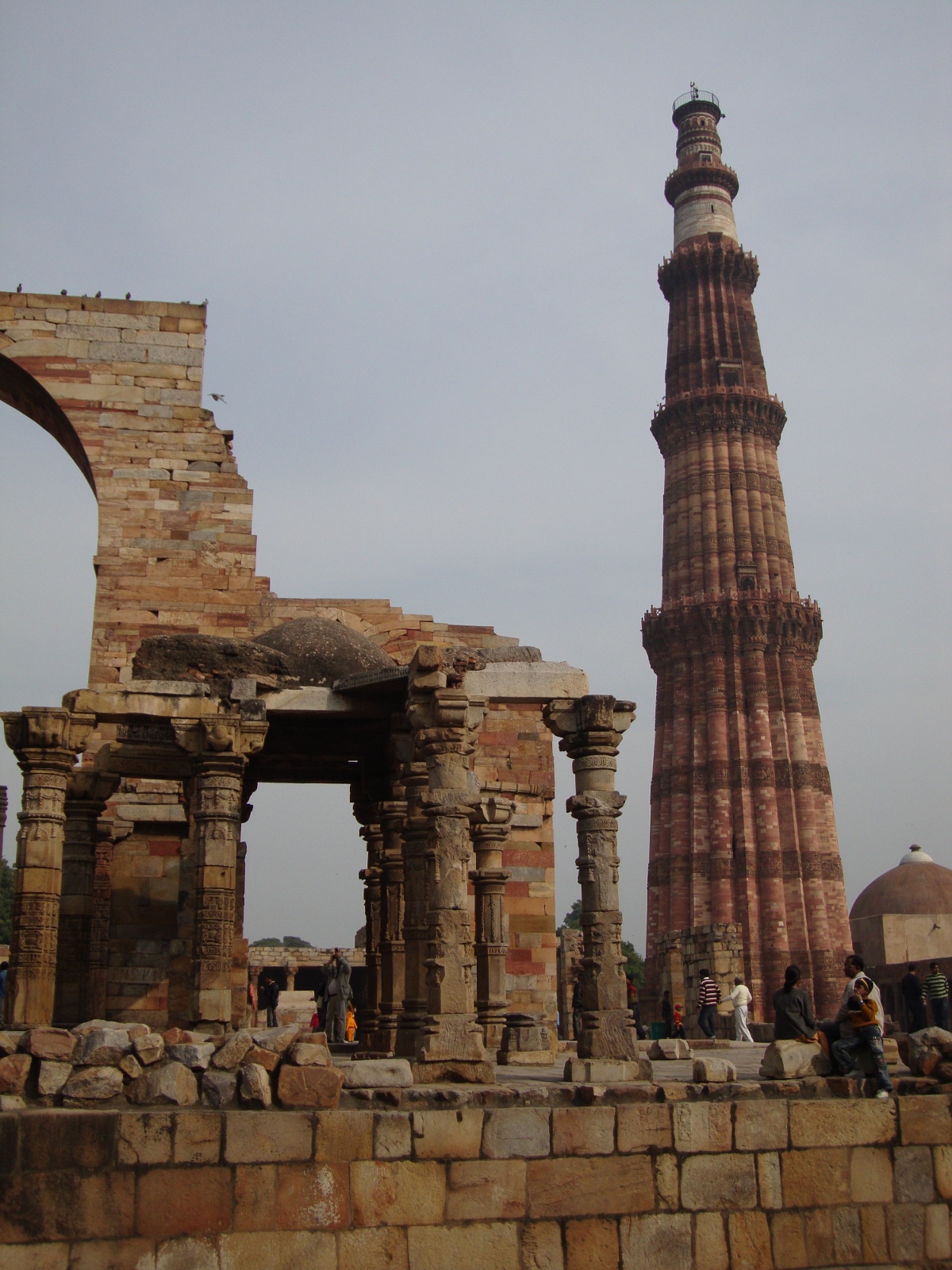The tallest pre-modern structure in India is Qutb Minar, a 238-ft (72 m) tower in southern Delhi. Qutb-ud-Din Aybak, the first sultan of Delhi, started building the tower in 1199. Several succeeding generations of rulers added to and modified the tower; it only reached its full height after Qutb-ud-Din’s death. Even the British tried to add their own cupola on the apex of the tower, but it did not match the aesthetic of the rest of the tower, so it came down in 1848. The British cupola now sits by itself on the landscaped lawns of the Qutb Minar complex. Qutb Minar and the surrounding area was declared a UNESCO World Heritage Site in 1993.
Publications about Indian construction projects in the early-independence period often compared the new projects with pre-modern Indian monuments; Qutb Minar was a particularly popular item of comparison. Towers or tower-like structures invited comparisons most readily. The ventilation stack of Tarapur Atomic Power Station, India’s first nuclear powerplant, was 366 feet (112 meters) tall—much taller than the Qutb Minar,” as several publications noted.1 Qutb Minar was also used as a standard measuring stick for height for any structure. According to an article in Assam Information, “the height between the bottom of foundation and the top of the piers” of the Saraighat Bridge, the first permanent crossing of the Brahmaputra River, “it almost as much as the height of the Qutb Minar.”2 The winner in any early-independence period height competition was Bhakra Dam. Indian Recorder and Digest stated that the height of the dam, “which is the highest structure in Asia, is about three times that of the Qutab Minar.”3
This rhetoric established continuity with the pre-colonial past, but also attempted to transcend it. The colonial period had been a difficult time for India’s educated elites. Although they believed in their own country’s historic greatness, they also absorbed the western critiques of India as backward, underdeveloped, and imprisoned by tradition.4 Building dams, bridges, and nuclear powerplants was a way to recreate India’s past greatness, which had been lost during centuries of colonial domination. The new India’s greatness, though, would not be based on Indian tradition, but on western ideas and technology. The structures of independent India were bigger, and by implication better, than anything the Sultans of Delhi or the Mughals had been able to make. In the sources that I have read, nobody seemed to care that a concrete ventilation stack was not aesthetically comparable to an intricately-wrought red sandstone and white marble tower.
- “Tarapur: Gateway to the Nuclear Age,” Economic Studies 10 (1968), 421. [↩]
- “Saraighat Bridge: A Boon to Assam,” Assam Information, November 1963, 20. [↩]
- “Dedication of Bhakra Dam,” Indian Recorder and Digest, November 1963, 6. [↩]
- Ashis Nandy explained the internalization of western ideas by Indian elites in a lecture I attended in Delhi on June 11, 2012. [↩]


